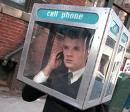

 CECT/ Hyndai W100
CECT/ Hyndai W100
WATCH PHONESThe CECT/ Hyndai W100 offers a unique experience with a 65,000 colour TFT LCD touch screen, which incorporates some of the latest touch phone technology. Amazingly the "watch" hides a 1 GB flash memory system complimenting the 1.3 megapixel camera, offering more than enough memory to save those special moment. The "phone" also has a traditional in-built FM radio, phone book, and other standard facilities present in the traditional handsets of today. Works also in the US.
SpecificationsFrequency Tri-band 900 / 1800 / 1900MHz
Display TFT LCD, 260'000 colors, 128x160, QCIF, 1.33
Languages English, Simplified Chinese, traditonal Chinese, some other languages according to the quantity
Ringtone 64 chord polyphonic, MP3, MP4, MIDI
Call Voice recorder in AMR, WAV format. - Built-in speaker and stereo earphone output
Music MP3 background player, equalizer support
Radio FM radio
Video 3GP, MP4, supports fullscreen play, speed/pause
Camera 1.3M pixel, support MP4 video with sound
File formats JPEG, GIF, BMP, picture files; MP3, AAC, AMR, IMY, MID, WAV audio files; 3PG, MPG4 video files.
Memory 512MB TF card as present, extendable to 2G, document management
Data transfer USB function / data wire, Bluetooth stereo
Internet WAP, GPRS
Phonebook 250 groups of contacts of carte de visit, support incoming call with big head sticker, group ring
Messaging SMS and MMS, storage for 200 messages, SMS group sending
Power switch Support auto switch on/off, can set self-defined photo of switching on/off
Alarm Alarm clock can be set from Monday to Sunday at random, and can set MP3 as alarm rings
Games 2 common games
Talk time 180 minutes
Standby time 160 hours
Dimensions 42 X 66 X19.3 mm
Weight 57 grams
Color Black or Milk white
Miscellaneous Voice recorder, calls vibration, voice dialing, IP dialing, calculator, graphics editor, memos, calendar, stopwatch, rates exchange, world time
Comes with 2 x Battery, Watch base, User manual, USB cable, Earphones, Bluetooth earphones, Charger cable, Charger, Power adaptor
Price: ₤ 99.82
Source :https://www.specialphones.eu/
































